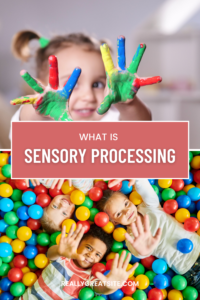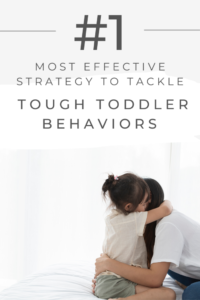
Building a strong parent-child bond is one of the most rewarding aspects of parenting. The power of attachment between a parent and child is undeniable, shaping the emotional well-being and development of the child for years to come.
In this article, we will explore the key components of attachment theory and how you can use it to create a deep and meaningful connection with your child.
From building trust and security to overcoming challenges, we will provide practical strategies for nurturing a healthy relationship that will stand the test of time. Join us on this journey of building a strong parent-child bond and watch as your connection grows stronger every day.

Hi! My name is Marra and I’m a mama and a pediatric occupational therapist who has years of experience working with children with different developmental needs and helping their parents navigate the ups and downs of child development.
I loved being a support person for parents learning about child development, attachment theory and their child’s individual needs. I love empowering parents to trust their intuition and advocate for their child and family’s needs.
I truly believe there are thousands of correct ways to parent and you are the expert of your child and family because no one knows them as well as you do.
Regardless of your child’s individual developmental trajectory, I strongly believe in the power of building a strong parent-child bond. I hope to offer you some strategies to help you do so. At the end of the day, take what serves you from this article and leave the rest, trusting your intuition.

UNDERSTANDING ATTACHMENT THEORY
Attachment theory, proposed by psychologist John Bowlby in the 1950s, offers profound insights into the dynamics of relationships, particularly between parents and children. At its core, attachment theory explores the bonds formed between individuals, emphasizing the critical role these bonds play in emotional development and well-being throughout life.
Central to attachment theory is the concept of the “attachment bond,” which refers to the emotional connection forged between a child and their primary caregiver, typically a parent. This bond is not only crucial for the child’s immediate safety and security but also lays the foundation for their socio-emotional development in the future.
Key Tenets of Attachment Theory
1. Secure Base: According to Bowlby, children view their caregivers as a “secure base” from which they can explore the world and seek comfort when needed. A secure base provides a sense of safety and security, allowing children to venture out to explore their surroundings confidently.
2. Attachment Styles: Attachment theory categorizes children into different attachment styles based on their interactions with their caregivers. The four primary attachment styles are secure attachment, anxious-ambivalent attachment, anxious-avoidant attachment, and disorganized attachment. These styles are believed to shape individuals’ socio-emotional functioning and relationship patterns throughout their lives.
3. Impact on Development: Secure attachment lays the groundwork for healthy emotional development, fostering trust, empathy, and resilience in children. Conversely, insecure attachment can lead to difficulties in regulating emotions, forming trusting relationships, and coping with stress later in life.
Attachment theory underscores the significance of building a strong parent-child bond in shaping children’s emotional development and future relationships. By understanding the principles of attachment and actively cultivating a secure attachment bond through responsive caregiving, consistency, emotional availability, and support for exploration, parents can lay a strong foundation for their child’s well-being and resilience in life.

BUILDING TRUST AND SECURITY
When building a strong parent-child bond, it is essential to focus on building trust and security within the relationship. Trust is the foundation of any healthy attachment, as it allows the child to feel safe and secure in their interactions with their parent.
By being consistent, reliable, and responsive to your child’s needs, you can help them develop a sense of trust in you as their caregiver. This trust forms the basis of a secure attachment, which provides a stable and nurturing environment for your child to thrive and grow.
By creating a secure and trusting relationship with your child, you lay the groundwork for promoting emotional bonding and fostering a deeper connection with them. Building trust and security within the parent-child bond not only strengthens the relationship, but also provides a solid foundation for emotional growth and development.,
PROMOTING EMOTIONAL BONDING
In addition to building trust and security, promoting emotional bonding with your child is crucial for deepening your connection and fostering a strong parent-child bond. By being emotionally available, empathetic, and attuned to your child’s feelings and needs, you can create a nurturing environment that allows for open communication and understanding.
This emotional connection forms the core of a healthy relationship, setting the stage for further growth and development in your parent-child bond. Nurturing a healthy relationship with your child starts by fostering emotional bonding and creating a supportive and loving environment for them to thrive in.,
NURTURING A HEALTHY RELATIONSHIP
Nurturing a healthy relationship with your child involves more than just emotional bonding – it also requires active listening, mutual respect, and setting clear boundaries. By maintaining open communication, showing appreciation, and spending quality time together, you can strengthen the bond you share with your child.
Building a healthy relationship is an ongoing process that requires effort and dedication, but the rewards of a strong parent-child bond are immeasurable. Overcoming challenges in your relationship with your child may be inevitable, but by approaching them with patience, understanding, and a willingness to learn and grow together, you can navigate through these obstacles with grace and strengthen your bond even further.,

OVERCOMIMG CHALLENGES
Every parent-child relationship faces its own set of challenges. Whether it’s differences in personality, conflicts over rules and boundaries, or external factors such as stress or lack of time, there will be obstacles to overcome.
It’s important to approach these challenges with an open mind and a willingness to listen to your child’s perspective. By acknowledging and addressing issues head-on, you can find solutions that strengthen your bond and help you grow together.
Remember, overcoming challenges is a natural part of any relationship, and by facing them with patience and understanding, you can emerge stronger and more connected than ever before. Through perseverance and a commitment to working through difficulties, you can create a resilient and lasting bond with your child.
Practical Strategies for Strengthening Attachment can include implementing daily rituals, engaging in activities that your child enjoys, and practicing positive discipline techniques that promote trust and respect. By incorporating these strategies into your daily routine, you can nurture a strong and secure attachment with your child that will withstand any challenges that come your way.,
Practical Strategies for BUILDING A STRONG PARENT-CHILD BOND
One practical strategy for strengthening attachment is to implement daily rituals that create a sense of security and belonging for your child. This could be as simple as a bedtime story every night or a weekend family movie night. These consistent routines can provide a comforting structure for your child and help them feel safe and connected to you.
Another effective way to build a strong parent-child bond is to engage in activities that your child enjoys. Whether it’s playing their favorite sport, painting together, or baking cookies, spending quality time doing things they love can deepen your connection and create lasting memories. By showing an interest in their passions and interests, you are affirming their value and building a foundation of trust between you both.
Practicing positive discipline techniques is also crucial in strengthening attachment. By setting clear and fair boundaries, providing consistent consequences, and offering praise and encouragement for good behavior, you can create a supportive and nurturing environment for your child to thrive. This approach fosters a sense of trust and respect that is essential for a healthy parent-child relationship.
By incorporating these practical strategies into your daily routine, you can nurture a strong and secure attachment with your child that will withstand any challenges that come your way. Building a resilient bond takes time, effort, and commitment, but the rewards are immeasurable. Embrace these strategies wholeheartedly, and watch as your relationship with your child blossoms and grows stronger with each passing day.,
Understanding and implementing the principles of attachment theory is crucial for building a strong parent-child bond. By focusing on building trust, promoting emotional bonding, nurturing the relationship, and overcoming challenges, you can create a secure and loving connection that will last a lifetime.
Remember, taking the time to prioritize bonding and emotional connection is key to strengthening your relationship with your child. As you continue on this journey, keep in mind that every moment spent investing in your bond is a moment well spent.
After all, the love and connection you share is the foundation for your child’s future success and happiness. So, keep nurturing that special bond, and watch as it flourishes with each passing day.
